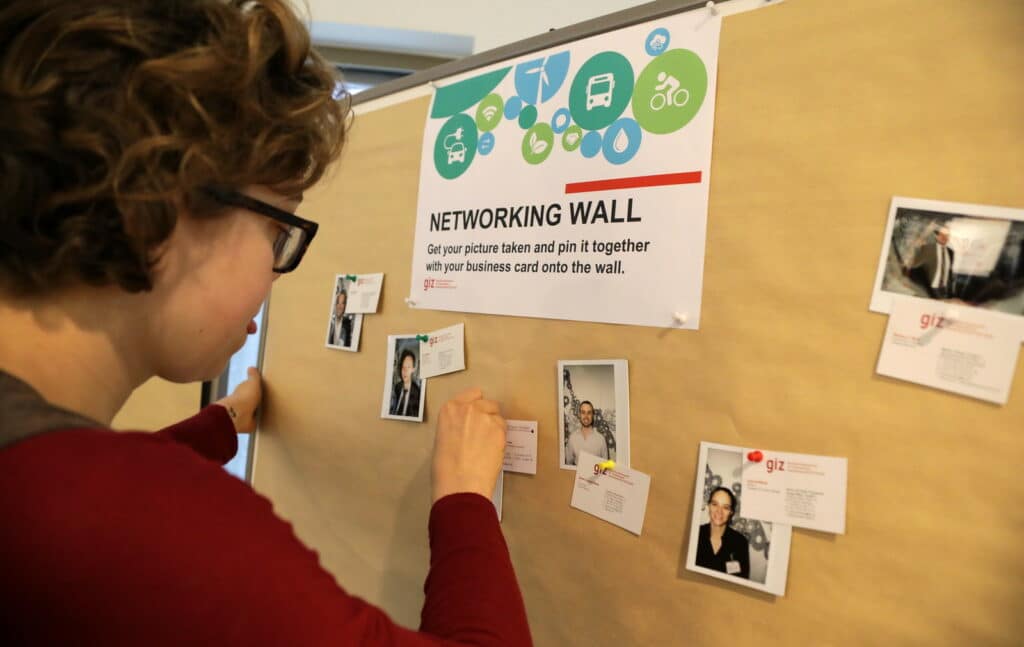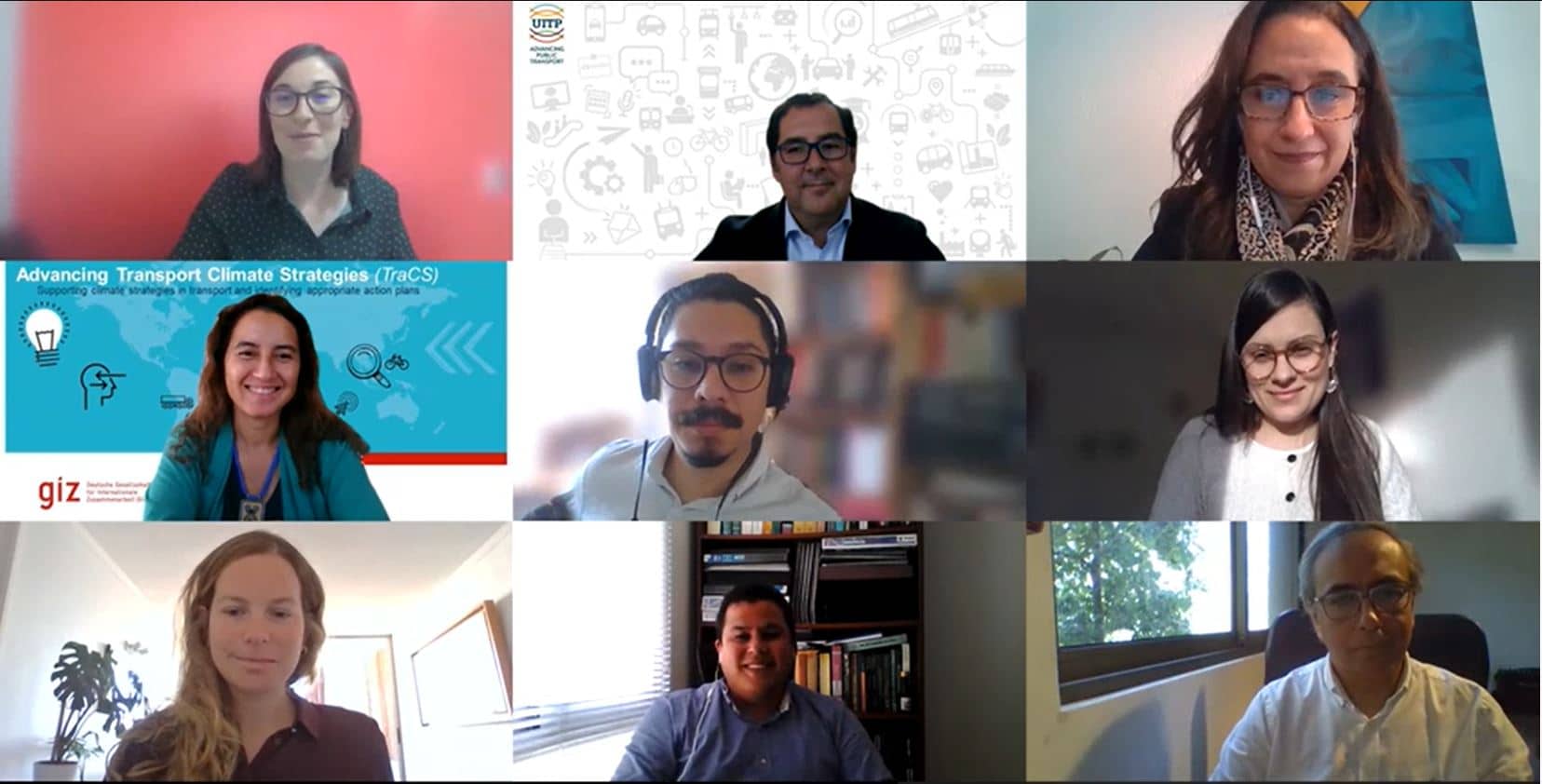
This article is part of our #StoriesofChange where we profile the work of our partner countries in developing climate actions in transport. Read more #StoriesOfChange and follow the Hashtag on Twitter.
Uniting transport and climate policies is key for the development of a sustainable, low-carbon transport sector worldwide. For countries, this poses several challenges: first, defining what are the “right” measures for its specific national and local context; second, to shape and implement the measures across different sectors and institutions in a coherent way.
The Regional Peer Networks on Transport and Climate Change in Africa, Asia, and Latin America were initiated to help address these challenges. As a new forum to support and facilitate progress in transport and climate, the networks provided representatives of transport and environment ministries from a dozen countries per region a space to exchange experiences, transfer knowledge, and to learn jointly.
Analogous to the Six Action Recommendations to enhance climate ambitions in transport, the topics of the peer networks included climate targets for the transport sector, electrification of transport, national urban mobility policies, freight, infrastructure, and adaptation of transport systems. In the sessions, guest speakers from international and regional organisations provided insights and good practices. Peers presented case studies and discussed specific questions and challenges in interactive group work.
As transport is a highly localised sector, its functioning as well as its users’ needs differ, not only from country to country, but also among cities within a country. In many discussions it became clear that even though the precise ‘how’ of implementing measures needs to be adapted at the local level, we can still learn a lot from others’ experiences. Exchange stimulates new ideas, motivates action and it helps to crystallise the universally underlying principles of effective policy-making for transport and climate.
Strategic documents such as Nationally Determined Contributions, Long-term Strategies, National Adaptation Plans, and national sectoral development plans are important tools for governments to communicate their commitments and objectives to national stakeholders and to the international community. Yet, transport continues to be underrepresented in these strategies, and targets are not always set or supported by adequate measures (see Tracker of Climate Strategies for Transport). More efforts are needed by all stakeholders to formulate coherent and integrated plans capable of guiding public and private sector action.
In the Asian network for instance, peers from Sri Lanka shared how these targets can be backed up with precise measures. The country is strengthening its data collection and reporting on emissions from different vehicle segments to facilitate informed decision-making. In the African network, Ugandan peers highlighted the complexity of the landscape of public and private stakeholders that need to be involved. A careful screening of this landscape is crucial to design an efficient stakeholder engagement process.



The essential role cities play in sustainable transport policy implementation came up in all regions. How national governments can support them was illustrated, for example, with the case study on designing national policies for urban transport shared by Indonesian and Philippines peers. They showed how policies shaped at the national level can provide effective support to cities while giving local governments sufficient flexibility to design programmes in line with local needs. Similarly, the Senegalese case study in the Africa Network illustrated how the needs vary significantly among cities. In this context, the national government can provide not only financial support but also capacity building programs for local transport authorities and facilitate in coordinating the many entities involved in urban transport.
In the networks, peers from all regions agreed that with expected economic development, the transport sector will have to deliver greater and more efficient passenger and goods mobility. The peers emphasised the importance of cost-efficient, resilient, and low-carbon transport infrastructure investment. Peers from Asia and Africa see these areas as especially critical for their transport policy making.
Among Asian peers, the shift from road to rail was highlighted as a key area for investments and supportive policy frameworks. In their case study, Indian peers shared how air pollution from road transport was a major driver for developing the country’s Rail Freight Initiative. Malaysian peers showcased the country’s programme for making electrified rail the backbone of mass passenger transportation. In the Africa Network, improved connectivity and greater resilience of road and rail networks were at the heart of the discussion, as well as the need for better urban and rural freight solutions based on, eventually electrified, two-and three-wheelers.
The Latin American network set a strong focus on electrification of urban transport systems and decarbonisation of freight in general. In the Latin American as well as the Asian network the focus was on public transport and on the electrification of two- and three-wheelers, mainly driven by the interest to improve air quality. A case study by a Vietnamese peer illustrated how public-private cooperation can facilitate the provision of electric bus services. It also showed how small national markets are facing challenges in attracting supply of electric vehicle models and their spare parts.
In Africa, electrification and respective policies are still in their early stages but progressing, as the peers’ case studies showed. Rwanda and Tunisia reported on their first experiences: Tunisian peers presented the country’s efforts to streamline the objective of electrification in transport, and energy policy-making, as well as in educational curricula. Peers from Rwanda underlined that understanding the cost and benefits of electrification is necessary to inform policy choices. Thereby, the higher upfront cost and the development of charging infrastructure remain the principal obstacles to electrification. Currently, electrification of electric 2-wheelers is technically and economically most feasible in the country.
The Peer Networks proved to be an efficient tool for strengthening transport and climate capacities on the national and regional level. From this initial pilot phase, five factors for successful peer to peer exchange were identified:

If you are interested in the topics that were covered during the peer exchange, have a look at our peer exchange related publications for Asia (in English), Africa (bilingual: French and English) and Latin America (Spanish).
If you believe that you suffer (potential) negative social and/or environmental consequences from IKI projects, or wish to report the improper use of funds, to voice complaints and seek redress, you can do so using the IKI Independent Complaint Mechanism.